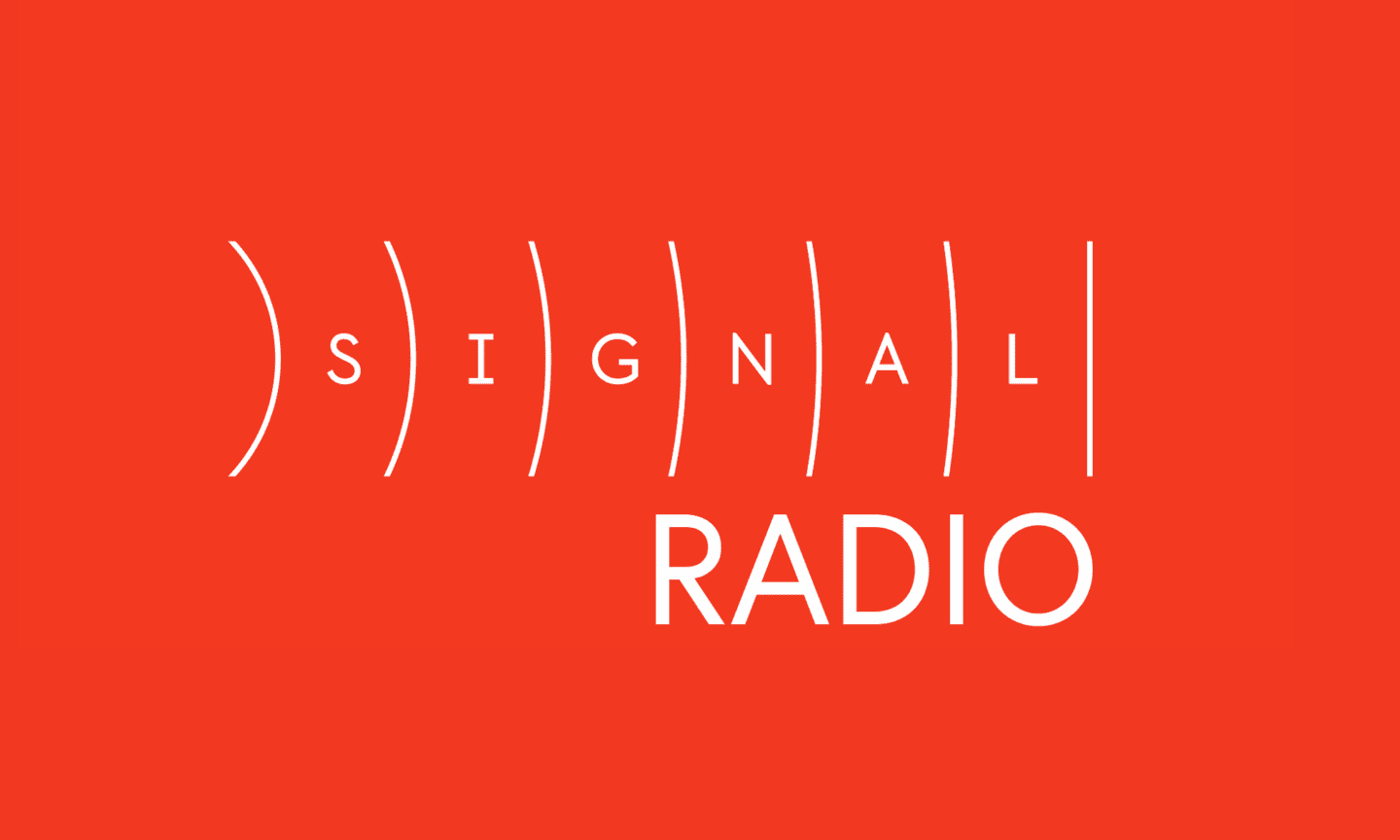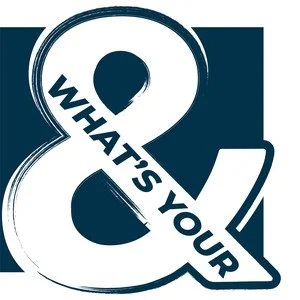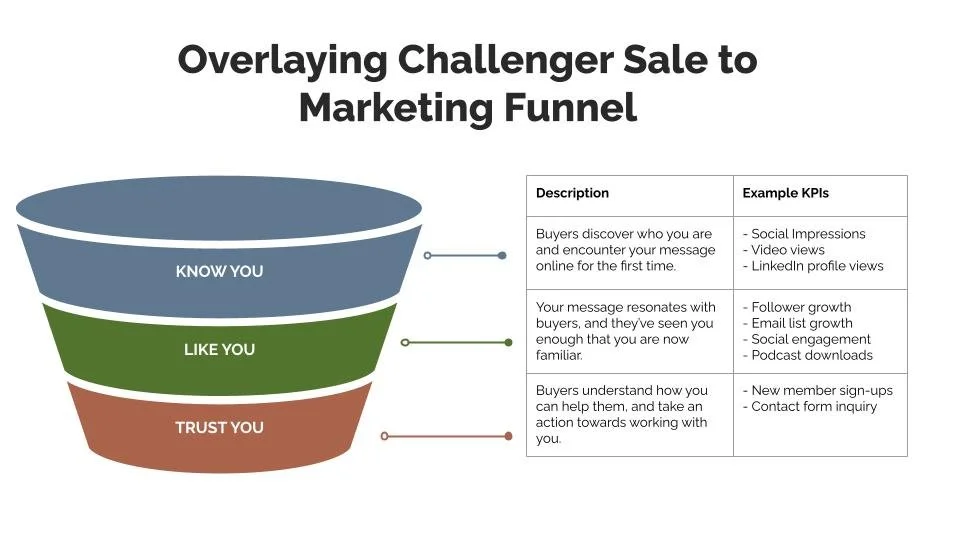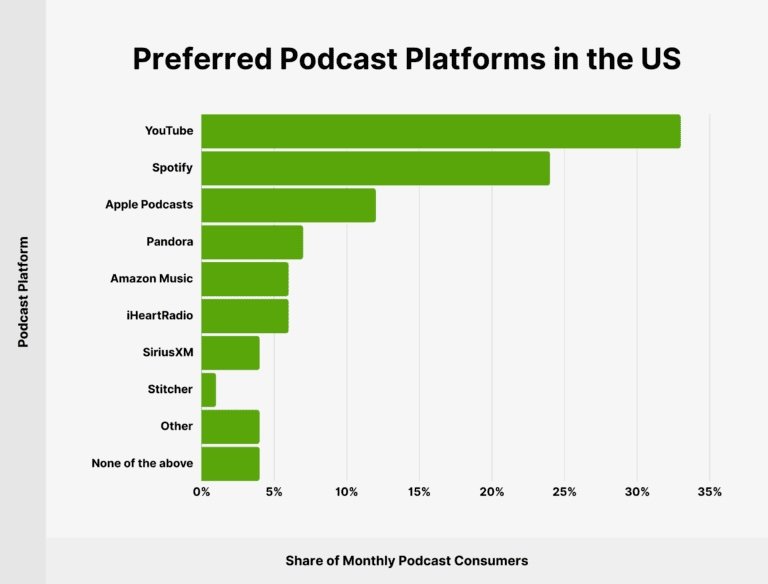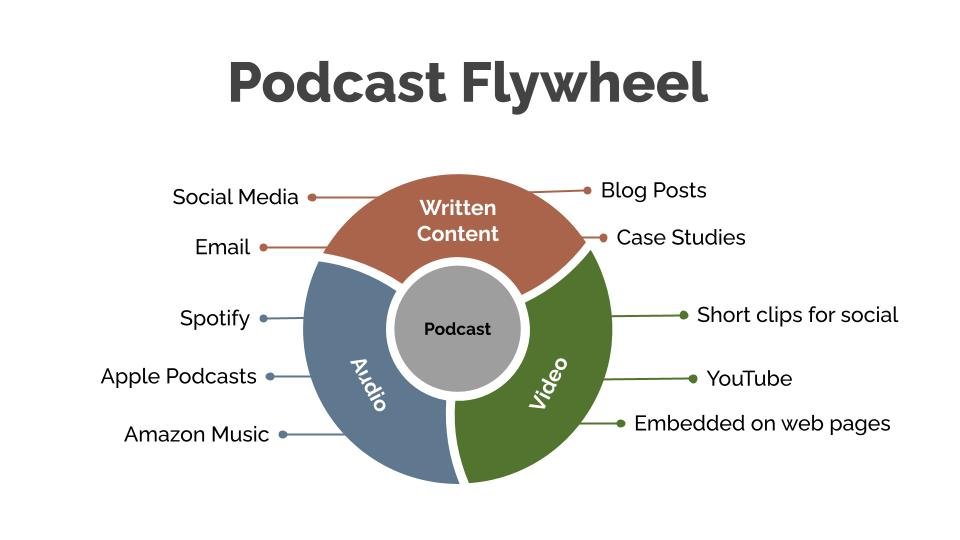Audio vs Video Podcasts: Which Makes Sense for Your Marketing Strategy?
Be careful whose advice you listen to when it comes to podcasting. There is no one-size-fits-all approach. Let’s face it, the focal point is your personality and you have very real time and budget constraints. So when it comes to audio vs video podcasts, which makes the most sense for your business?
In the marketing world, there are debates about certain best practices. Gated vs un-gated content, brand vs performance, organic vs paid, and more. Within the podcasting subset of the market, the big debate is definitely audio vs video podcasts.
As you would imagine, folks successful growing a YouTube channel tend to have a strong bias toward video. On the other hand, legacy podcasters tend to look down on video, deeming it unnecessary because podcasts were meant to be consumed audibly, not visually. (I can already hear the arguments starting…)
With so much noise in the marketplace, this article is my attempt to offer strategic reasons why you should consider audio vs video podcasts. The choice isn’t about chasing shiny objects. It’s about clarity on who you're trying to reach, what you want to say, and what kind of content you can sustain.
Let’s break it down.
When does an audio podcast make sense for your marketing strategy?
An audio-only podcast can be an efficient way to build trust and credibility over a long period of time. Without the pressure of being on-camera, conversations can be more candid and open. Here are some advantages of an audio-only podcast:
You want a podcast to be a low-cost, long-term investment
With a long-term marketing investment, you must consider the up-front costs. Keeping them low can extend your ‘runway’ for the show, giving it adequate calendar time to make an impact. There are many other contributing factors (like episode frequency, length, topics, guests, and others) but foregoing the costs of video production is certainly one lever to pull.
When producing a video podcast, there are visual elements that need to be taken into consideration—intro/outro sequences, scene transitions, lower thirds, grid layouts, overlays, B-roll, and more.
With an audio-only podcast?
The only major visual element is the show’s artwork (and perhaps audiograms and social tiles). Audio production typically includes an overall mix, adding in intro/outro sequences, adjusting EQ, layering audio effects, and of course editing the conversation.
One great example of an audio-only podcast is Signal Radio. Mark Johnson is a principal architect at a firm called Signal Architecture + Research. With a background playing and recording music, Mark knows how to record, mix and edit podcast audio. It’s fun for him.
Architecture, people, place.
On this monthly show, Mark Johnson sits down with community leaders, project teaming partners, and other influential people in the architecture space for conversations about the impact of design on communities.
The team at Signal took Mark’s passion for audio and creativity, and turned it into a podcast that features short conversations with clients and teaming partners. The unique element? Conversations are recorded on-site and in-person at the physical location where the project took place. This captures the energy, passion, and ambient noises of the space.
Adding a video element to this operation would be a step too far for this show. Instead, the team uses B-roll footage and screen overlays of the physical space as part of its social video strategy.
You want your guests to be comfortable when recording
A more relaxed atmosphere when recording can be a big bonus for podcasts that feature people who may be first-time podcast guests. Especially as business podcasts become more mainstream, there’s bound to be industries where this happens.
For example, on the What’s Your And? Podcast, host John Garrett records on video with guests via Squadcast for an engaging conversation. However, his guests come from all walks of life and not all of them feel comfortable with the final product being on camera. So while the video helps enable good conversations, the final product is audio-only.
In today's workplace, it's easy to get defined solely by your job title, rather than be seen as a whole person.
In each episode, John Garrett sits down with professionals from fields like law, accounting, tech, finance, and engineering to discuss the unique passions they pursue outside of the office. From home-brewing beer to ballroom dancing, Garrett's guests reveal the diverse "Ands" that round out their lives. By sharing these personal interests, they not only boost morale and strengthen relationships - they bring unexpected skills back to the workplace.
John’s focus? Deliver a top-notch audio experience. If his guests don’t have a microphone, he will ship a mic out to them so they have clean audio. The shipping costs are 100% worth it to him in the long run because of this focus on a consistent, high-quality audio experience.
You don’t feel comfortable on camera
Just like the guests in the example above, you might not want to be on camera. And you know what? That’s reason enough not to do a video podcast.
Let’s face it. You have a right to your privacy and to market your expertise in a comfortable way. If you don’t feel comfortable recording video, don’t do it. Podcasting is a long-term investment and being comfortable with your recording process and end product is an important factor in your show’s longevity.
When does a video podcast make sense for your marketing strategy?
If you’ve got the team to support a video podcast, it can be a faster track to growth. A study done by The Podcast Host revealed that just 17% of podcast hosts record their episodes in video format.
That leaves an opportunity to stand out. Here are some reasons why you should consider a video podcast:
Stronger personal connection. Viewers see you.
Buyers, especially in professional services, want to do business with people they know, like, and trust. This is one of the core principles in The Challenger Sale — a classic business book by Matthew Dixon. I’ve taken this concept and overlaid it onto the classic marketing funnel to illustrate your marketing’s goal at each stage:
With a video podcast, prospective buyers see your face on platforms like YouTube and LinkedIn over and over again, building familiarity. They hear your voice for a few seconds every now and then as they’re scrolling.
One day, one of your video snippets hits upon a topic that resonates deeply with them. They listen to the snippet, then click the link to the full episode. Halfway through while nodding along to each one of your points, they subscribe to your show.
You have no idea this is happening, but a podcast marketing flywheel like this can accelerate prospective buyers going from knowing you → liking you → trusting you. And when the day comes when they’re ready to inquire about your services, they already feel like they know you because of the parasocial relationship that has been built through your podcast.
You want to take full advantage of LinkedIn, YouTube, and other social platforms
Most (all?) social media platforms reward video content because it’s the most engaging. It adds another human element to the experience. Video content consistently out-performs other content types.
To which the audio-purists would say, “Oh yeah, but what about audiograms, huh? That’s video content.”
Yes. Audiograms are technically video content… 🙄
For those who don't know, audiograms are audio clips from a podcast put behind a still image (usually the show artwork) with background music and captions. Here’s an example:
As you can see, audiograms are pretty basic. Don’t get me wrong, they’re great for reminding followers to tune in to recent episodes! However, podcasters who adopt a video-first production workflow are in a position to take advantage of dynamic, engaging video snippets on social media.
They’re not nearly as engaging as seeing the speaker’s face in the video. Here’s a good example from Hinge’s Spiraling Up podcast:
You want to accelerate new users discovering your podcast
Apple has always been a leader in the podcast space, but Google is quickly catching up. This is good news for video podcasters.
In 2018, Google launched Google Podcasts. In 2023, they integrated that product with YouTube, enabling users to assign videos to a special ‘podcast’ playlist. Google sees the potential for podcasts, and having a video-first show gives you a discovery advantage by creating on YouTube.
According to eMarketer, YouTube is the most preferred platform by podcast listeners in the US. It should be noted, however, that this data does skew toward a younger demographic. When it comes to business podcasts, this data may look different. Keep that in mind when developing your marketing strategy.
Ok, podcast purist, I know what you’re thinking; yes, you can connect your RSS feed to YouTube and generate a static image “video” that users can discover… but that method does not yield nearly the same results as a true video-first podcast.
One of the most under-appreciated parts of YouTube isn’t necessarily the long-form content. YouTube also has a Shorts feature, which feels like TikTok or an Instagram Reels feed. This is a way to push your content in front of potential new users. Business podcasts don’t do a very good job at taking advantage of this. More in the next section.
You want an efficient way to produce a wide-range of content formats
With a video podcast, you unlock the trifecta of content formats: audio, video, and text. As the graphic below illustrates, a podcast is an efficient source of content for your marketing program.
Today, technology has made it extremely simple to generate clips from long-form content. With the right video templates, a little bit of skill, and knowledge of what to look for, pulling clips is a natural fit for any podcast producer.
The result of consistent, steady use of short-form content?
One of the top podcasts in my portfolio is a weekly show called the Ground Transportation Podcast, hosted by Ken Lucci of Driving Transactions and James Blain of PAX Training. The show’s target audience is owners/operators of ground transportation companies, like limousine services and bus rental companies.
Take your transportation business to the next level.
Ken Lucci and James Blain share the secrets of growing a successful and profitable ground transportation company.
On this podcast, you’ll hear interviews with owners, operators, investors, and other key players in the industry. You’ll also hear plenty of banter between Ken and James.
Each episode is broken up into short clips, which are shuffled into a social calendar that publishes 3-4 shorts per week across YouTube, LinkedIn, and Meta (Facebook + Instagram). While individual channel performance can vary, overall the short-form content typically generates a total of ~10,000 views organically, as the illustration below shows. And that’s only seven months in!
These results are the product of pure consistency. Even in a narrow niche like luxury passenger transportation, a podcast can flourish and become an industry staple.
Audio vs Video Podcasts: What’s the right balance to strike?
People find new podcasts on video, and engage deeply with audio.
While there is no questioning the discovery benefits of video platforms like YouTube and TikTok, one of the biggest advantages of podcasts is you don’t need your eyes to consume the content. You can listen to a podcast while you commute to work, mow the lawn, fold clothes, go to the gym, or any number of activities.
Across our client portfolio, an average YouTube listener will consume ~30% of an episode. The same episode on audio platforms? Listeners will consume ~75%.
You don’t need a fancy in-home creator studio right out of the gate, either. Your setup can evolve over time as you learn what you need—and what you don’t need—to invest in.
Ready to explore whether an audio vs video podcast is right for you? Let’s talk.

